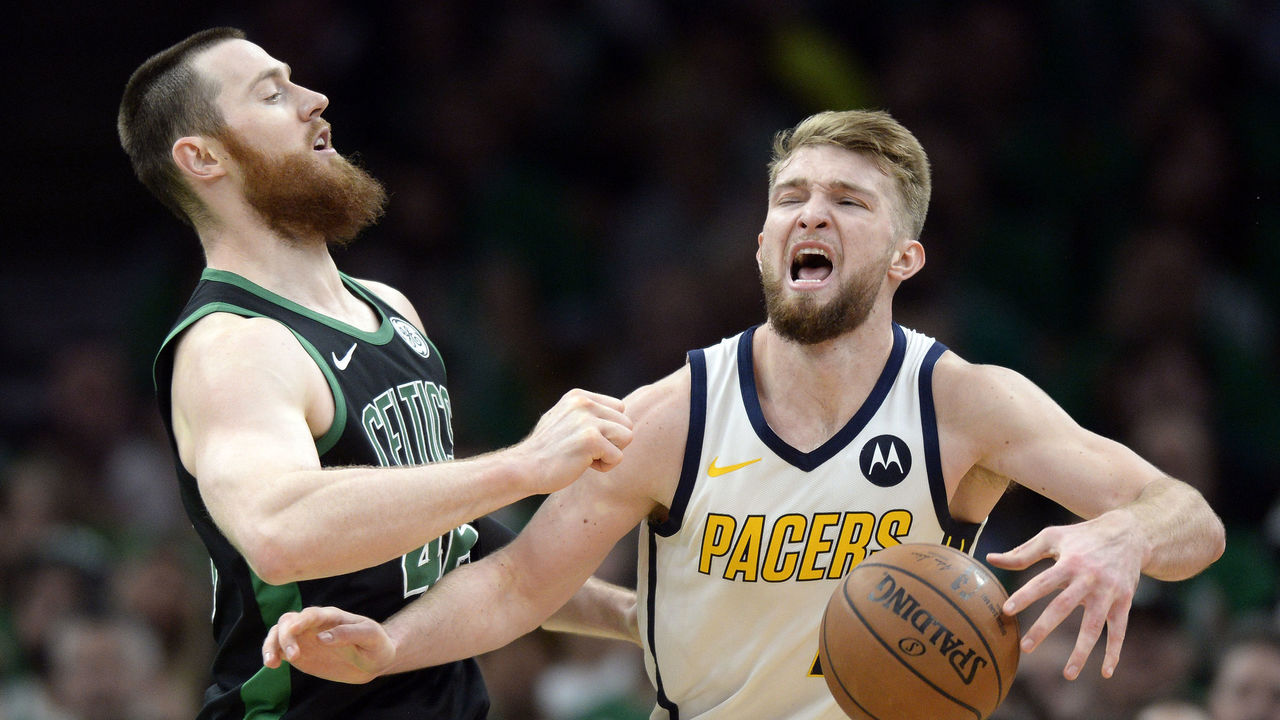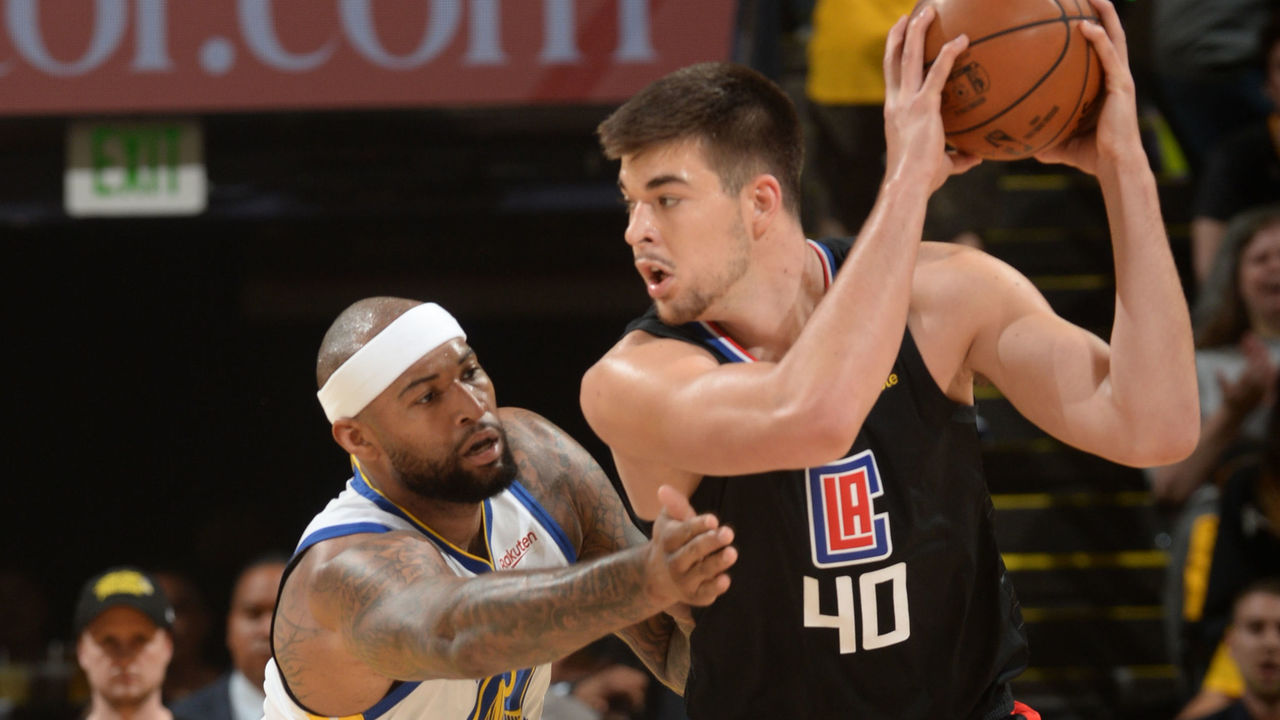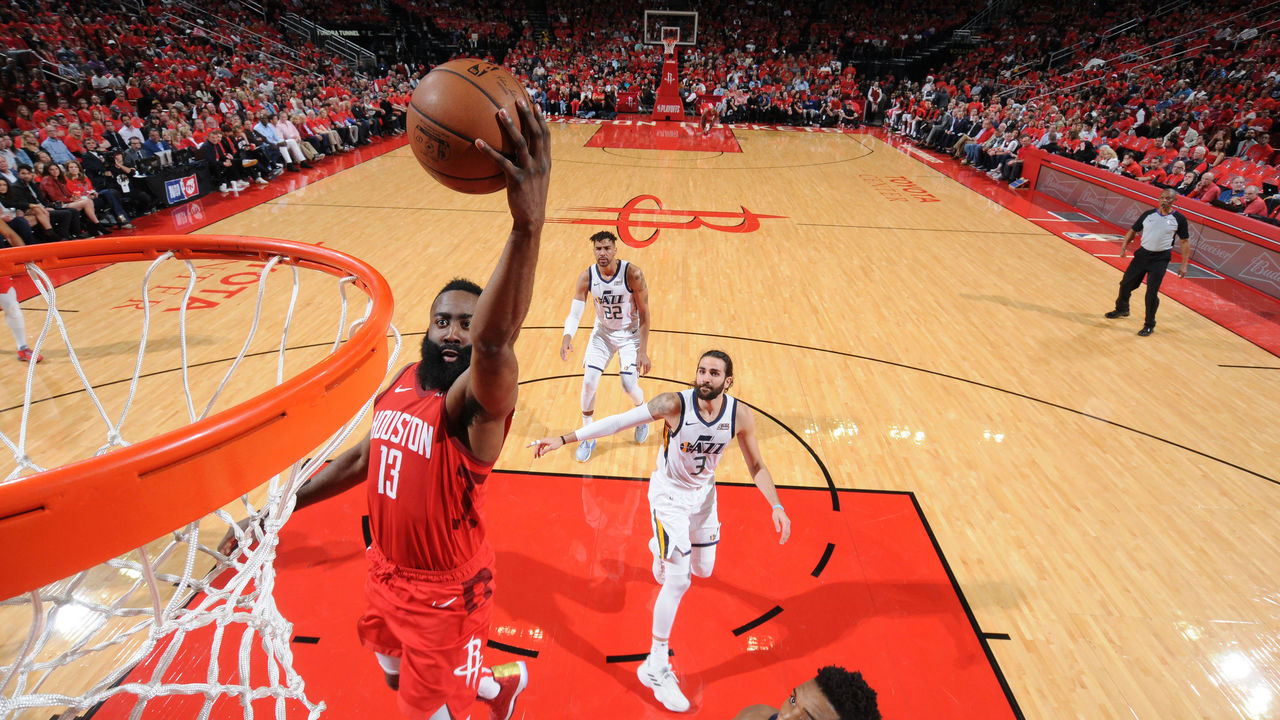5 takeaways from opening weekend of the NBA playoffs
It's rarely wise to draw sweeping conclusions from one game during a long NBA season, but in a best-of-seven knockout series, one game can mean an awful lot. For instance, the first 48 hours of the 2019 playoffs saw home-court advantage change hands in three different matchups, while a fourth series underdog held court and drew first blood on its own floor.
Here are five takeaways from the postseason's opening weekend:
Philly's precarious perimeter D

There isn't enough room in this space to detail all the different things that went wrong for the 76ers in their embarrassing home loss to the resolute Brooklyn Nets. Among other issues, Joel Embiid was plainly playing hurt, Ben Simmons hardly bothered to show up, and neither J.J. Redick nor Tobias Harris contributed anything offensively.
That last problem was particularly destructive, because if Redick and Harris aren't producing efficient offense, they are significant net negatives. More specifically, Harris struggles to stay in front of his man on the perimeter while Redick doesn't have the strength or length to deal with any size or physicality. The Nets targeted those two - Redick in particular - and routinely torched them at the point of attack. Simmons, frankly, wasn't much better at containing penetration. Brooklyn's guards consistently cruised into the middle of the floor, where a buffet of options awaited them: kickout passes to open shooters when the defense collapsed, and clean mid-range jumpers or straight-line drives to the hoop when it didn't.
Spencer Dinwiddie, Caris LeVert, and D'Angelo Russell did the bulk of the damage. When they weren't attacking mismatches one-on-one, they were carving the Sixers up in the pick-and-roll. Meanwhile, Joe Harris got loose off the ball when those drivers engaged multiple defenders and even slower forwards like DeMarre Carroll managed a couple blow-bys in isolation. When Philadelphia played a drop coverage, the on-ball defenders hung their bigs out to dry by getting magnetized by screens and providing feeble rear-view pressure. But when Philly conceded the switch, things seemed to go even worse, with Dinwiddie being particularly cruel to the likes of Mike Scott and Boban Marjanovic.
Russell struggled mightily early on - forcing some off-balance floaters and generally making poor decisions - but by giving him so much time and space to probe in the middle, the Sixers ultimately allowed him to settle into a rhythm. Embiid was actually quite good as a back-line defender despite his compromised mobility, but there was only so much he could do against the relentless parade of dribble-drives. The Nets attempted 34 shots in the restricted area, the most of any team over the weekend.
There are adjustments the Sixers can make - bringing their bigs up a bit higher and/or downsizing so they can switch more effectively - but this has been a structural flaw for the team all season, and it isn't going away. The guys they rely on to space the floor are defensive liabilities. They need to be better at one end of the court, at least.
The Pacers, stuck in mud

About halfway through the third quarter of their Game 1 loss to the Boston Celtics - a quarter in which they would ultimately score eight points on 2-of-19 shooting - the Indiana Pacers, increasingly desperate and stumped for ideas, tried a five-on-four pick-and-roll with Myles Turner and Domantas Sabonis. Al Horford ducked under the Sabonis screen as Turner curled from the elbow to the top of the key and uncorked a rare pull-up jumper (he took just 62 shots off the dribble in the regular season, and less than 10 out of the pick-and-roll, according to NBA.com). The look was clean but the shot rimmed out. It was that kind of day.
Indiana made hay in the early going by getting out in transition, either by forcing turnovers or running off live rebounds. But once the Celtics tightened things up and stopped gifting them open-court opportunities, the Pacers completely withered. According to Cleaning the Glass, they scored 53.5 points per 100 possessions in half-court situations, an astonishingly paltry figure.
There are things the Pacers can do better - they weren't connecting solidly on their screens, for one thing, particularly on dribble-handoffs - but it's still hard to imagine them scoring enough in this series to make Boston sweat. Jaylen Brown face-guarded Bojan Bogdanovic off the ball and the Celtics showed aggressively when Bogdanovic came off screens, neutralizing the Pacers' biggest scoring threat. Aron Baynes, Al Horford, and Marcus Morris took turns corralling pick-and-roll ball-handlers and stoning Domantas Sabonis in the post. They kept Turner under wraps by switching pick-and-pop actions. The Pacers couldn't generate any separation.
Indiana will undoubtedly shoot better as a team for the remainder of this series, but against Boston's versatile, switchy defense, the struggles with shot creation have already been as bad as feared.
Troubling signs for Playoff Cousins

After so many years of anticipation, it was strange how anticlimactic DeMarcus Cousins' playoff debut was, at least contextually. It was surely a big moment for the center on a personal level, and the crowd at Oracle gave him a rousing response when he drained an early 3-pointer, but his presence ultimately made little difference in the victory. If anything, the Warriors won in spite of him.
The Clippers, as one might've expected, repeatedly ran pick-and-rolls at Cousins, mainly with the Lou Williams-Montrezl Harrell combo, and to great effect. Cousins was never a burner to begin with, and since coming back from a torn Achilles, his lateral movements have been downright indolent.
He also didn't make up for it at the offensive end, where the Clippers completely ignored him on the perimeter (a growing trend as he continues to clank threes) and swarmed him inside, forcing him into six turnovers. Cousins finished the game with a minus-17 rating in 21 minutes before fouling out. His backup, the more agile Kevon Looney, was plus-30 in 17 minutes.
None of this really matters against the Clippers, but as the Warriors get deeper into the playoffs, Cousins' shortcomings will become more and more difficult to hide. Looney isn't a better player than Cousins, but he probably makes more sense in a Warriors-specific context.
On a team without this much shooting, playmaking, and overall offensive firepower, you'd certainly rather have the ultra-skilled big with overpowering strength and a polished back-to-the-basket game. But those traits aren't of any great use to Golden State, particularly when the starters are in the game. All the Warriors really need from the center spot is someone who'll set solid screens, roll hard to the rim, finish lobs, lurk in the dunker spot for dump-offs, and occasionally crash the offensive glass.
Cousins can do all that, but he can't maximize his skills that way, and if he isn't maximizing his skills offensively, Looney's advantage at the other end could eventually win out.
Can play Kanter?

In the first round two years ago, Oklahoma City Thunder coach Billy Donovan watched his plodding, slow-to-react center give up an easy lob in the pick-and-roll, and then said to assistant Mo Cheeks, "Can't play (Enes) Kanter."
Being told you're incapable of being on the floor is about as damning an indictment as you can receive as a player. But in a revenge game against Donovan and the Thunder on Sunday, Kanter, now a member of the Portland Trail Blazers, proved otherwise - with some caveats.
For one thing, Donovan often seemed to forget the lesson he learned while coaching the big Turk in Oklahoma City. The Thunder frequently had Steven Adams post up against Kanter, which worked on occasion but was far kinder than going at him in high pick-and-rolls. When the Thunder did the latter, they were usually successful.
That said, Kanter's struggles defending in space are less of a liability in this particular matchup. Oklahoma City's lack of 3-point shooting allows Portland's wings to be more aggressive helping inside on drives and tagging the roll man from the weak side. The Blazers can live with getting burned from deep by anyone other than Paul George, and they'll gladly concede pull-up jumpers from Russell Westbrook in the mid-range. That allows them to simplify Kanter's role in the defensive scheme and limits the number of options he needs to guard against in the pick-and-roll.
It was just one game, but Kanter was a team-high plus-15 in the Blazers' monkey-shedding win, with a stellar 87.5 defensive rating. In doing so, he displayed the value he's capable of bringing if he can just keep his head above water on defense. Kanter's rebounding was massive on both ends - he secured a pair of clutch offensive boards down the stretch to help ice the victory - and he even made some nice four-on-three reads out of the short pick-and-roll, including a nifty sling pass to Rodney Hood in the corner. He won't make Blazers fans miss Jusuf Nurkic any less, but for now, he looks (gasp) playable.
The Bucks' Harden coverage didn't work for the Jazz

If it seemed like the Milwaukee Bucks had laid out a blueprint for successfully defending James Harden, the Jazz discovered on Sunday that executing the scheme is not quite as easy as Milwaukee's made it look - even with Rudy Gobert lurking on the back line. And yes, the Jazz had defended Harden with a variation of that coverage in the past, but had never completely overplayed his left hand while rolling out a red carpet to the rim for his right.
On Sunday, Harden finished with 29 points on 30 used possessions and only shot three free throws, which suggests the trade-off worked well for Utah. But it was his passing that really did the damage, particularly during a second-quarter run that put the Rockets in control for good. With Harden waltzing into the lane on every possession, Utah's wings didn't seem to trust that Gobert could corral both Harden and Clint Capela (even though guarding the drive and the lob is possibly Gobert's greatest skill), and often rotated down to help on Capela as soon as Harden started his drive.
The Beard's as good as they come at freezing defenders with his dribble and disguising his intentions with his eyes. So when he caught the Jazz selling out to protect the lob or the underneath pass, he countered by slinging kickouts to the corners for wide-open P.J. Tucker threes. The Bucks also collapsed on those Harden drives during the season, but they did a better job of recovering to shooters on the perimeter (having Giannis certainly helps).
It didn't help that Gobert didn't do an especially good job as the drop man. He's not used to playing as far back as Brook Lopez does in Milwaukee's scheme, and there were times he got burned for staying up too high. Some led to blow-bys, while others necessitated those back-end rotations from teammates when Capela had too much space to slip baseline. Because he didn't need to screen for Harden to drive, Capela would make his rim run from the corner rather than the top of the key, which made it harder for Gobert to track him away from the ball.
Harden shot 6-of-8 from the restricted area in Game 1, and the Rockets shot 25-of-32 (78.1 percent) overall, which was tops among all teams over the weekend. The Bucks may have been onto something, but there really is no good way to guard this dude.